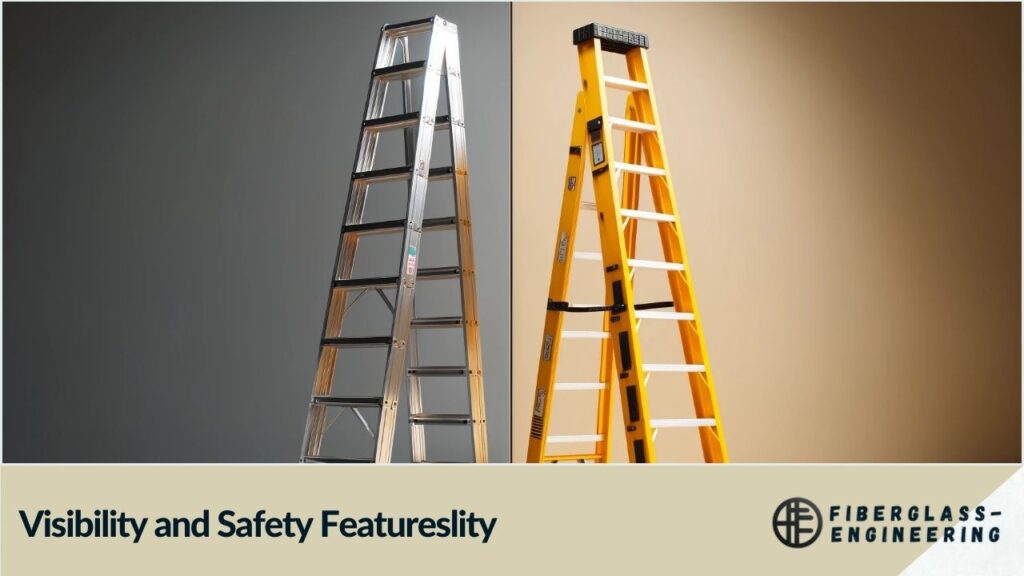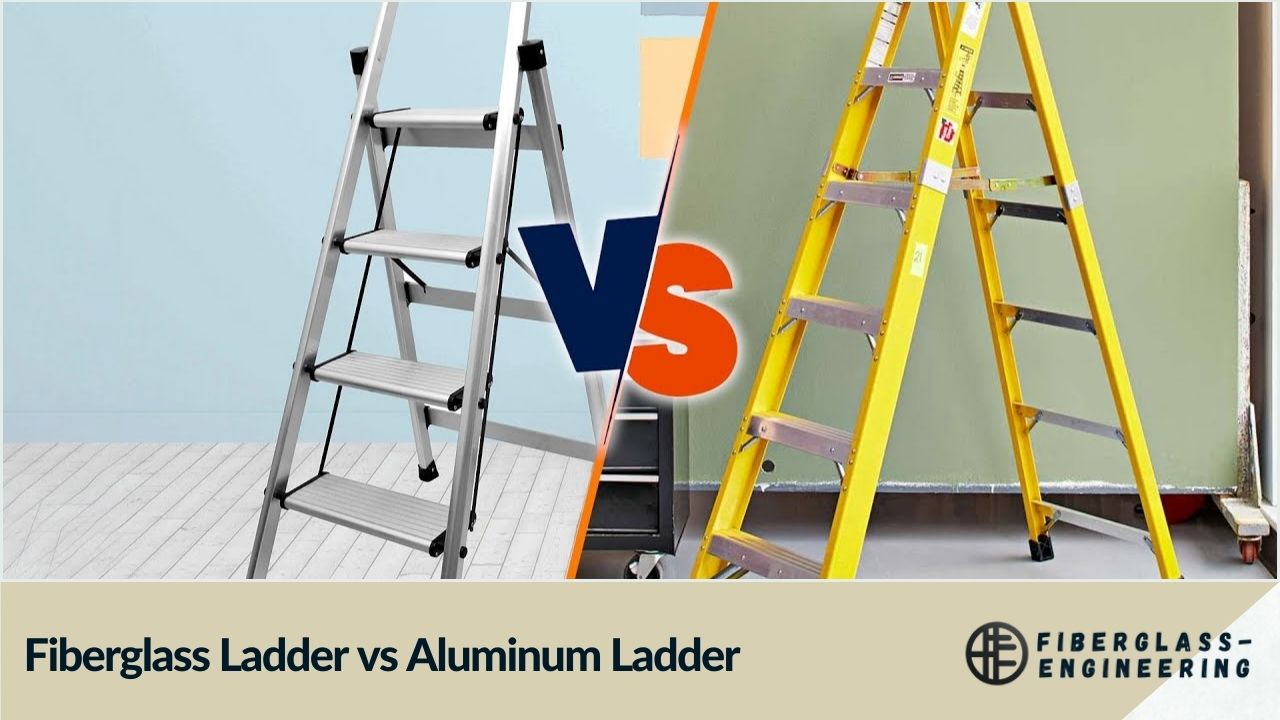When it comes to choosing the right ladder for your project, two popular options often come to mind: fiberglass and aluminum ladders. Both have their unique advantages and disadvantages, making the decision crucial for safety and efficiency. This comprehensive guide will explore the key differences between fiberglass and aluminum ladders, helping you make an informed choice for your specific needs.
Material Properties and Durability
Fiberglass ladders are known for their exceptional durability and strength. Made from a composite material consisting of glass fibers embedded in a polymer resin, fiberglass ladders offer superior resistance to weathering, corrosion, and chemical exposure. This makes them an excellent choice for outdoor use or in environments with harsh conditions.
Aluminum ladders, on the other hand, are prized for their lightweight nature and corrosion resistance. While they may not be as durable as fiberglass in extreme conditions, they are still highly resistant to rust and can withstand various environmental factors. However, aluminum ladders can be prone to dents and bends if subjected to heavy impacts.
Weight and Portability

One of the most significant advantages of aluminum ladders is their lightweight nature. This makes them extremely portable and easy to maneuver, especially for tasks that require frequent ladder repositioning. For workers who need to transport ladders between job sites or move them frequently during a project, aluminum ladders are often the preferred choice.
Fiberglass ladders are generally heavier than their aluminum counterparts. While this can make them more challenging to transport, the added weight contributes to their stability when in use. For stationary tasks or jobs where the ladder will remain in one position for extended periods, the extra weight of a fiberglass ladder can be beneficial.
Electrical Safety
When it comes to electrical safety, fiberglass ladders are the clear winner. Fiberglass is an excellent electrical insulator, making these ladders the safest choice for electricians or anyone working near electrical sources. The non-conductive nature of fiberglass significantly reduces the risk of electrical shocks or accidents.
Aluminum, being a metal, is an excellent conductor of electricity. This property makes aluminum ladders unsuitable for use near electrical sources or power lines. Using an aluminum ladder in such environments can pose a severe safety risk and should be avoided at all costs.
Heat Resistance
Fiberglass ladders have a distinct advantage when it comes to heat resistance. They can withstand high temperatures without warping or losing structural integrity. This makes them ideal for use in hot environments or near heat sources.
Aluminum ladders, while generally heat-resistant, can become hot to the touch when exposed to direct sunlight or high temperatures. In extreme cases, prolonged exposure to heat can affect the ladder's structural integrity, potentially compromising safety.
Cost Considerations
Initially, aluminum ladders tend to be more budget-friendly than fiberglass options. This lower upfront cost makes them an attractive choice for homeowners or businesses on a tight budget. However, it's essential to consider the long-term value and specific use case when making a decision based on price alone.
Fiberglass ladders, while typically more expensive upfront, often prove to be a cost-effective choice in the long run. Their durability and resistance to various environmental factors mean they may need to be replaced less frequently than aluminum ladders, potentially offering better value over time.
Maintenance Requirements
Both fiberglass and aluminum ladders require regular maintenance to ensure safety and longevity. However, the maintenance needs can differ:
Fiberglass ladders may require occasional cleaning and inspection for signs of wear or damage to the fiberglass material. Over time, exposure to UV rays can cause some degradation, so storing them properly when not in use is important.
Aluminum ladders are generally low-maintenance but should be regularly inspected for dents, bends, or loose rivets. They're easier to clean but may require lubrication of moving parts more frequently than fiberglass ladders.
Visibility and Safety Features

Fiberglass ladders often come in bright, high-visibility colors, making them easier to spot on job sites. This can be a crucial safety feature in busy or low-light environments. Many fiberglass ladders also incorporate non-slip rungs and other safety features as standard.
Aluminum ladders typically have a metallic finish, which may not be as visible in certain conditions. However, many manufacturers now offer aluminum ladders with high-visibility elements or coatings to enhance safety.
Environmental Impact
When considering the environmental impact, aluminum ladders have an edge. Aluminum is highly recyclable, and many aluminum ladders are made from recycled materials. This makes them a more environmentally friendly choice in terms of end-of-life disposal and resource conservation.
Fiberglass, being a composite material, is more challenging to recycle. While efforts are being made to develop recycling processes for fiberglass, it currently has a larger environmental footprint compared to aluminum in terms of disposal.
Application-Specific Considerations
The choice between fiberglass and aluminum ladders often comes down to the specific application:
- For electrical work or environments with electrical hazards, fiberglass ladders are the safest and often the only acceptable choice.
- In industries where weight and portability are crucial, such as painting or window cleaning, aluminum ladders might be preferred.
- For outdoor use in varying weather conditions, fiberglass ladders offer superior durability and stability.
- In marine environments or areas with high humidity, both materials perform well, but fiberglass may have a slight edge in terms of long-term durability.
Conclusion
Choosing between a fiberglass ladder and an aluminum ladder depends on various factors, including the nature of your work, safety requirements, budget, and personal preferences. While fiberglass ladders excel in electrical safety, durability, and stability, aluminum ladders offer unmatched portability and cost-effectiveness.
Ultimately, the best choice is the one that meets your specific needs while ensuring the highest level of safety for your intended use. Consider all factors carefully, and don't hesitate to invest in quality, as a ladder is a crucial tool that directly impacts your safety and work efficiency.
FAQs
- Are fiberglass ladders safer than aluminum?
Fiberglass ladders are safer for electrical work due to their non-conductive properties. - Which ladder is lighter, fiberglass or aluminum?
Aluminum ladders are significantly lighter and more portable than fiberglass ladders. - Can aluminum ladders be used for electrical work?
No, aluminum ladders should never be used near electrical sources due to their conductivity. - Which ladder type is more durable?
Fiberglass ladders are generally more durable and resistant to environmental factors. - Are aluminum ladders cheaper than fiberglass?
Yes, aluminum ladders are typically less expensive upfront than fiberglass ladders.

